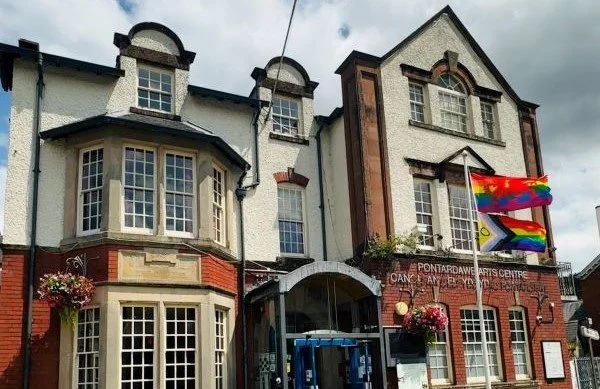Welsh Arts Investment: Encouraging Progress or Just a Start?
The Welsh government’s latest announcement of an £8 million capital investment in the arts has sparked both optimism and critical reflection within the sector. While arts leaders acknowledge this funding as an important step towards strengthening Wales’ cultural landscape, many argue that it falls short of addressing the deeper structural challenges facing theatres, venues, and touring companies across the country.
This investment, part of a broader £15 million package unveiled by Senedd minister for culture Jack Sargeant, is designed to align with the government’s refreshed priorities for the arts—supporting children and young people, advancing digital transformation, and working towards net-zero environmental goals. The funding, allocated by Arts Council Wales, is expected to provide much-needed capital for arts infrastructure. However, with mounting concerns about long-term financial sustainability, leaders across the sector are questioning whether this investment will lead to tangible, lasting improvements.
Balancing Optimism with Realism: Sector Reactions
Responses from Wales’ artistic community reflect both appreciation for the government’s commitment and recognition of the hurdles still ahead.
Creu Cymru director Louise Miles-Payne welcomed the announcement, describing it as a "significant investment" that reinforces culture’s role in promoting inclusivity and strengthening community bonds. Similarly, Theatr Cymru’s joint chief executives, Steffan Donnelly and Angharad Jones Leefe, highlighted the importance of ensuring accessibility for all, particularly in rural communities where transport and financial barriers often limit engagement.
However, Wales Millennium Centre’s chief creative and content officer, Graeme Farrow, injected a note of realism, pointing out that "£8 million will not go far where buildings are concerned." His concern is widely shared—many arts venues struggle with the costs of infrastructure maintenance, renovation, and energy efficiency upgrades, all of which require sustained investment beyond a single year’s funding allocation.
Liam Evans-Ford, executive director of Theatr Clwyd, echoed these sentiments, calling the investment a "positive step" while emphasising the need for financial planning that supports long-term stability.
Empowering Young Audiences: A Positive Shift
One of the most widely celebrated aspects of the funding package is its dedication to improving arts opportunities for children and young people.
Theatr Na nÒg’s general manager, Rachel Fryer, welcomed this commitment, particularly its potential to support young audiences in socio-economically disadvantaged areas. "Sustaining high-quality programming has cost implications, which we have seen increase dramatically over the last five years," she noted. "An additional investment in theatre for young audiences from areas such as ours here in south-west Wales can only be a positive."
With affordability and accessibility becoming growing concerns in the cultural sector, this funding could play a crucial role in ensuring that arts engagement is not reserved for those with financial means but instead serves communities across Wales.
Welsh Storytelling & Linguistic Identity
Beyond infrastructure and youth engagement, the government’s renewed emphasis on Welsh-language storytelling and multilingualism presents a valuable opportunity to elevate Wales’ cultural identity. Theatr Cymru welcomed this commitment, recognising the crucial role of linguistic representation in ensuring that Welsh voices are heard both nationally and globally.
For organisations like *Welsh Stories*, which champion Wales’ narrative traditions, this investment could provide an important boost in supporting authentic, diverse storytelling that challenges stereotypes and promotes the richness of Welsh heritage. If implemented effectively, such initiatives could help amplify the nation’s creative output while reinforcing Wales’ status as a leading force in arts innovation.
The Case for Long-Term Strategic Planning
Despite the positive reception to the funding, arts leaders have stressed the importance of establishing a robust implementation plan.
As Louise Miles-Payne of Creu Cymru articulated, "This plan should outline clear objectives, timelines, and responsibilities, ensuring that the strategic capital investment is utilised effectively and efficiently." Without such a framework, there is a risk that the funding will be unevenly distributed or fail to address the most pressing sectoral needs.
Additionally, flexibility in financial allocation across multiple financial years is essential, particularly for larger infrastructure projects requiring detailed planning and sustained investment. Short-term injections of funding, while beneficial, must be supplemented by long-term strategies to ensure Wales’ creative industries remain resilient in the face of economic pressures.
Looking Ahead: What’s Next for Welsh Arts?
While the £8 million investment represents a step forward, it is ultimately only one piece of the larger puzzle of cultural sustainability. Wales’ artistic community has long demonstrated resilience and ingenuity, yet ensuring its continued vitality requires ongoing collaboration between policymakers, arts organisations, and the communities they serve.
As the funding is distributed and implementation plans take shape, the sector must advocate for further investment, greater accessibility, and strategies that elevate Welsh storytelling onto a global stage.
The road ahead remains uncertain, but with continued pressure from leaders across the arts sector, this investment could pave the way for a more inclusive, sustainable future for Welsh culture.

